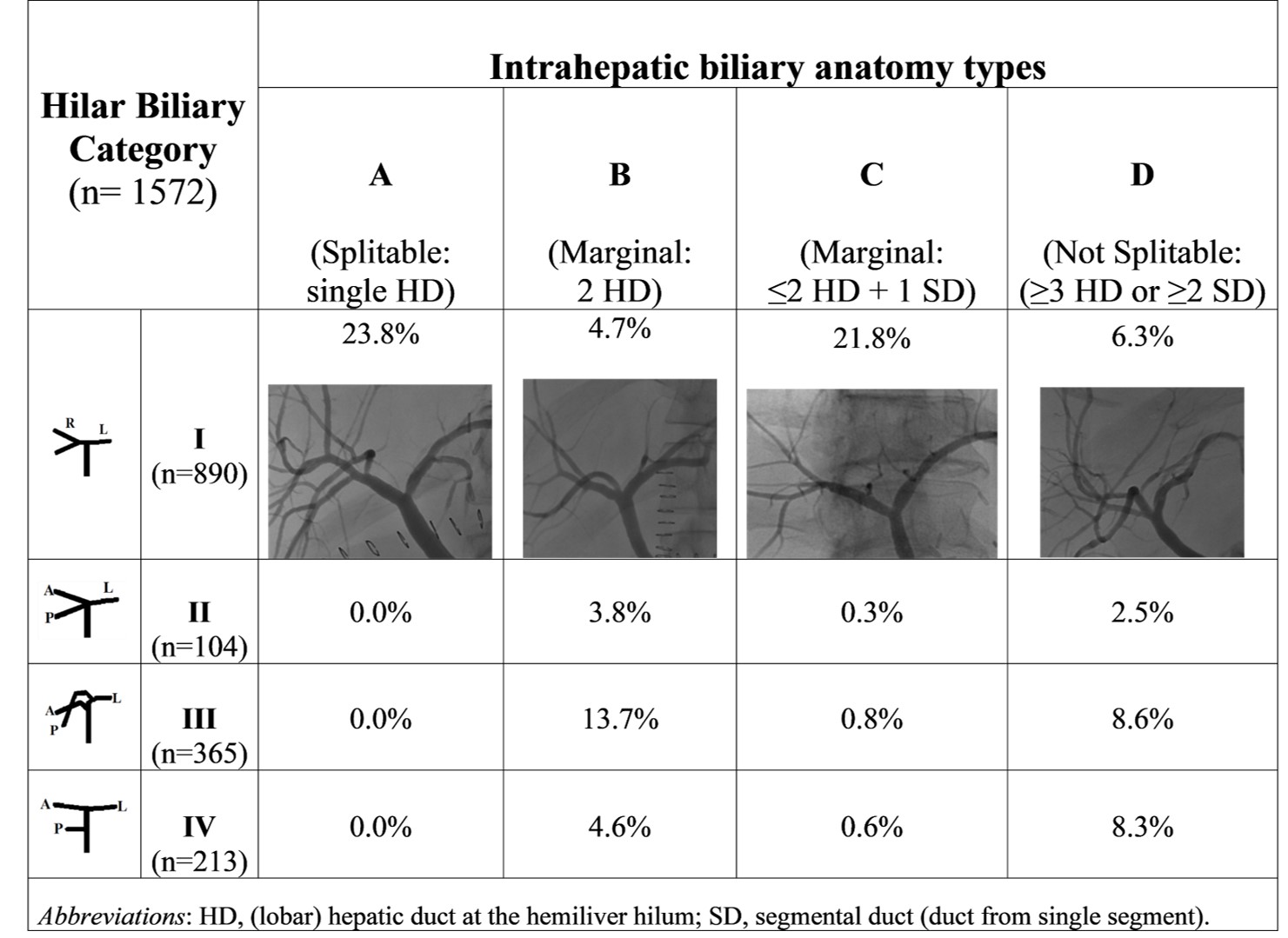Comprehensive Intrahepatic Biliary Anatomy Underscores the Split-ability and the Origin of Biliary Leakage in Hemiliver Split Liver Transplant
1Transplantation, Mayo Clinic Florida, Jacksonville, FL, 2Radiology, Mayo Clinic Florida, Jacksonville, FL
Meeting: 2021 American Transplant Congress
Abstract number: LB 85
Keywords: Bile duct, Post-operative complications, Split-liver transplantation, Surgical complications
Topic: Clinical Science » Liver » Liver: Living Donor Liver Transplant and Partial Grafts
Session Information
Session Name: Liver: Living Donor Liver Transplant and Partial Grafts
Session Type: Poster Abstract
Session Date & Time: None. Available on demand.
Location: Virtual
*Purpose: Hemiliver splitting is an effective approach to optimize the number of liver allografts available for both adult and pediatric patients on liver transplant waitlist. The insidious and deadly complications of biliary leakage restrict a broader application of split liver transplantation (SLT). Here, we present a comprehensive analysis of intrahepatic biliary anatomy from a large cohort of deceased-donor whole liver transplants (DDLT) for split-ability and anatomic basis of biliary leakage in SLT.
*Methods: We routinely perform post-transplant cholangiography in each DDLT. The cholangiographic images were reviewed for the 2511 DDLT from 1998 to 2012. The hepatic biliary anatomy was categorized I to IV according to the branching pattern and the number of right and left lobar hepatic duct (HD) at the liver hilum. The intrahepatic segmental bile ducts (SD) were classified as types I to IV with 0 to ≥2 SD crossing the virtual plane of hemiliver splitting.
*Results: Among the 1572 DDLT that had analyzable cholangiograms, the biliary hilar anatomy included 24% of category I-A that is most optimal for splitting, 5% category I-B that has 2 HD for biliary reconstruction of the right hemilivers, 22% category I-C that is splitable but has ≥1 SD crossing the plane of parenchymal splitting potentially leading to bile leakage at the split surface, and 6% of category I-D that is not conducive for splitting. We identified the crossing of segment I bile duct into RHD, segments VII/VIII ducts into LHD, segment IV duct into RHD, and segment V duct into LHD as the potential origins for biliary leakage after SLT. The Table below summaries the 4 categories and 4 types of the hilar and segmental biliary patterns for the entire cohort.
*Conclusions: In conclusion, the comprehensive assessment of intrahepatic biliary anatomy underscores ≥45% hemiliver split-ability, and accurately pinpoints the origins of bile leakage allowing for effective preemptive minimization of post-transplant biliary complications in SLT.
To cite this abstract in AMA style:
Nguyen J, Musto K, Dougherty M, Paz-Fugamalli R, Harnois D. Comprehensive Intrahepatic Biliary Anatomy Underscores the Split-ability and the Origin of Biliary Leakage in Hemiliver Split Liver Transplant [abstract]. Am J Transplant. 2021; 21 (suppl 3). https://atcmeetingabstracts.com/abstract/comprehensive-intrahepatic-biliary-anatomy-underscores-the-split-ability-and-the-origin-of-biliary-leakage-in-hemiliver-split-liver-transplant/. Accessed December 13, 2025.« Back to 2021 American Transplant Congress

